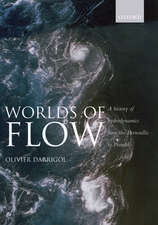Materials Challenges: Inorganic Photovoltaic Solar Energy: RSC Energy and Environment, cartea 12
Editat de Stuart J. C. Irvine, Darren Bagnall, Laurie Peteren Limba Engleză Hardback – 2 dec 2014
Din seria RSC Energy and Environment
- 9%
 Preț: 1109.50 lei
Preț: 1109.50 lei - 14%
 Preț: 1388.15 lei
Preț: 1388.15 lei - 14%
 Preț: 1239.89 lei
Preț: 1239.89 lei - 14%
 Preț: 1196.52 lei
Preț: 1196.52 lei - 14%
 Preț: 1134.91 lei
Preț: 1134.91 lei - 14%
 Preț: 1247.66 lei
Preț: 1247.66 lei - 14%
 Preț: 1370.21 lei
Preț: 1370.21 lei - 14%
 Preț: 951.22 lei
Preț: 951.22 lei - 14%
 Preț: 975.38 lei
Preț: 975.38 lei - 14%
 Preț: 1089.52 lei
Preț: 1089.52 lei - 14%
 Preț: 1384.87 lei
Preț: 1384.87 lei - 9%
 Preț: 970.22 lei
Preț: 970.22 lei - 9%
 Preț: 1066.22 lei
Preț: 1066.22 lei - 9%
 Preț: 973.23 lei
Preț: 973.23 lei - 9%
 Preț: 1172.46 lei
Preț: 1172.46 lei - 9%
 Preț: 1100.40 lei
Preț: 1100.40 lei
Preț: 1352.51 lei
Preț vechi: 1572.68 lei
-14% Nou
258.84€ • 268.18$ • 216.02£
Carte disponibilă
Livrare economică 01-15 martie
Specificații
ISBN-10: 184973187X
Pagini: 343
Dimensiuni: 163 x 241 x 28 mm
Greutate: 0.73 kg
Editura: Royal Society Of Chemistry
Seria RSC Energy and Environment
Cuprins
Notă biografică
Textul de pe ultima copertă
Materials Challenges: Inorganic Photovoltaic Solar Energy provides an authoritative reference on the various aspects of materials science that will impact the next generation of photovoltaic (PV) module technology. The materials emphasis will bring a fresh perspective to the literature and will highlight the many issues that are often buried in other texts where the solution to materials challenges can be crucial in developing a new PV technology. The emphasis of the book will be on the range of thin film PV materials. Thin film PV is growing more rapidly than crystalline silicon and although only 15% of the current market it could dominate in the longer term. This book addresses the fundamental aspects of PV solar cell materials and gives a comprehensive description of each of the major thin film materials either in research or in production. Particular attention will be given to the key materials drivers of solar conversion efficiency, long-term stability, material costs and materials sustainability.
Written by a distinguished team of experts, key chapters include Fundamentals of inorganic solar cells; Thin film silicon solar cells; TCOs; Cadmium telluride solar cells; CIS, CIGS, chalcogenides; New chalcogenides; III-V solar cells; Nanomaterials; Light capture; Photon management materials; Conclusions and future developments.
The book will be essential reading for materials scientists, chemists, energy technologists and all those involved in solid-state physics.













